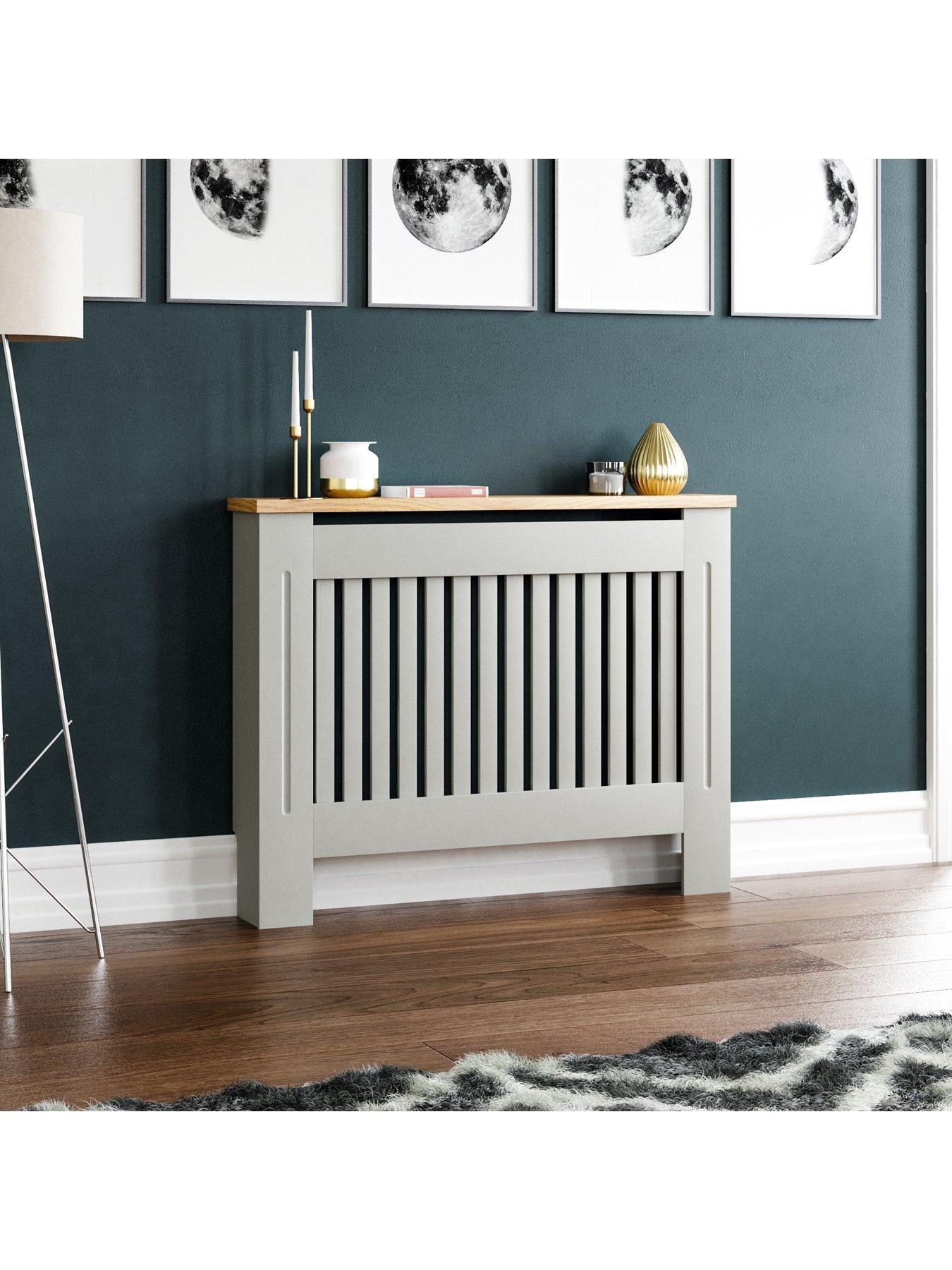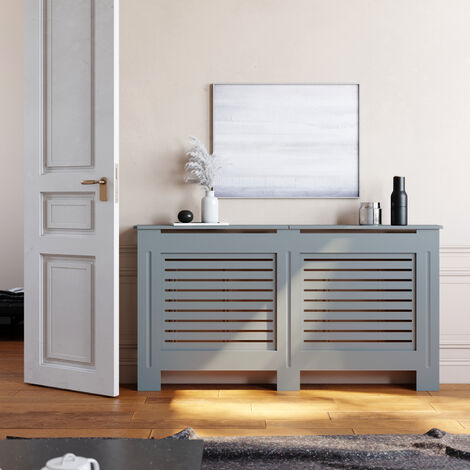The Ultimate Guide to Radiator Cover Products and Styles
Wiki Article
Radiator Covers: Understanding Products, Designs, and Advantages
Radiator covers serve both aesthetic and useful functions within a home, using a range of products such as steel, hardwood, and mdf to match different layout choices. Choosing the right radiator cover includes understanding the nuances of materials, designs, and their linked advantages.Kinds Of Products


Wood covers, commonly crafted from woods such as oak or maple, give a traditional, warm look that complements traditional insides. Their sturdiness and ability to be tarnished or painted contribute to their versatility. Steel covers, generally made from steel or light weight aluminum, are favored for their toughness and contemporary appearance, usually featuring sleek lines that boost modern rooms.
MDF, a manufactured wood product, is prominent for its cost-effectiveness and simplicity of personalization. It can be repainted or completed to match existing design while using a smooth surface area. Plastic covers, while much less usual, are light-weight and resistant to dampness, making them appropriate for moist atmospheres.
Inevitably, the selection of product for a radiator cover need to line up with the home owner's design preferences, useful requirements, and the particular setting where the cover will be set up. Each material offers a distinctive personality, making certain that there is an alternative to fit every taste and setup.
Popular Design Styles
Stressing aesthetic allure, preferred style styles for radiator covers mirror a series of preferences and interior decoration fads. Typical styles commonly feature detailed woodwork and elaborate describing, making them ideal for traditional or vintage-inspired insides. These covers normally include sculpted aspects, giving a warm and inviting feeling to any space.On the other hand, modern designs concentrate on minimalist aesthetics, characterized by clean lines and understated sophistication. Products such as steel or smooth wood with a smooth finish are typically used, enabling these covers to blend effortlessly right into modern-day areas. Industrial styles, on the various other hand, accept basic materials like subjected steel and concrete, adding a bold declaration to loft space or city settings.
For those looking for a distinct touch, bespoke styles offer modification alternatives that accommodate specific choices, enabling house owners to pick shades, patterns, and materials that enhance their style. Additionally, farmhouse-style covers incorporate rustic aspects, featuring distressed wood and easy kinds that stimulate a comfy, country charm.
Benefits of Radiator Covers
Radiator covers not just boost the visual appeal of a room yet also provide a number of functional benefits that make them a rewarding addition to any type of home. One of the key advantages is safety and security, particularly in homes with youngsters or pet dogs. Covers additional resources reduce the danger of burns from warm radiator surfaces, making sure a much safer setting.Furthermore, radiator covers can boost energy effectiveness. By guiding warmth right into the room rather than enabling it to get away, they help maintain a consistent temperature, lowering heating costs in time. This is particularly valuable in older homes where radiator systems might be much less effective.
An additional noteworthy benefit is sound reduction. Radiators can occasionally generate undesirable sounds during procedure, and covers can aid smother these sounds, adding to a more peaceful space. In addition, radiator covers can be practical, supplying added storage or screen area, consequently taking full advantage of the utility of often-overlooked areas.
Lastly, they can protect radiators from dirt and debris, which can hinder performance and increase maintenance requirements. With these integrated advantages, radiator covers arise as a functional option for enhancing both the performance and design of any home setting.
Installment Factors To Consider
Mounting radiator covers calls for mindful consideration to ensure both functionality and safety (Radiator cover). Initially, analyze the dimensions of your radiator and the surrounding area to guarantee an appropriate fit. Precise dimensions are essential; an ill-fitting cover can obstruct warmth flow or develop safety click resources and security threatsFollowing, assess the material of the cover. While wood supplies visual appeal, steel choices might give better resilience and warm resistance. Take into consideration the weight of the cover too; much heavier covers might need additional support or supports to avoid sagging or damage in time.
Ventilation is another important aspect. Covers need to include sufficient airflow to protect against getting too hot and keep effective home heating. Look for designs with slats or openings that permit heat to flow without blockage.
Additionally, ensure that the cover is firmly installed to stop accidents, especially in homes with children or family pets. web link Radiator cover. It's suggested to comply with the maker's installation standards closely and, if required, consult a professional for complex setups
Upkeep and Care Tips
Proper upkeep of radiator covers is vital for ensuring their longevity and optimal performance. Regular cleansing is essential; dust and debris can accumulate, obstructing air movement and reducing heat effectiveness. Use a soft, moist cloth or a microfiber duster to carefully clean the surface, staying clear of rough chemicals that may harm the surface. For repainted or wood covers, think about a suitable gloss or protective coating to keep their look.Check the covers occasionally for indicators of wear or damage, such as splits or peeling paint. Resolving these concerns quickly can avoid further deterioration. Guarantee that the covers are firmly fastened and look for any type of loosened screws or fittings, as resonances from the radiator can loosen them in time.
In colder months, prevent placing heavy things or attractive things on top of the radiator covers, as this can restrain warm distribution and create unneeded stress to the structure. Lastly, take into consideration seasonal upkeep by eliminating the covers for extensive cleaning and evaluation throughout warmer months when the heating system is non-active. Embracing these easy care ideas will enhance the efficiency and aesthetic appeal of your radiator covers, ensuring they serve their objective properly for several years to find.

Verdict
In recap, radiator covers offer as useful and aesthetic improvements to property rooms. Mindful factor to consider of installation and maintenance more ensures the long life and performance of radiator covers in any home setting.Radiator covers offer both functional and aesthetic functions within a home, using an array of products such as wood, mdf, and steel to match various layout choices. Choosing the appropriate radiator cover includes understanding the subtleties of products, layouts, and their connected benefits.Highlighting visual appeal, preferred layout styles for radiator covers mirror a variety of preferences and interior layout fads.Radiator covers not just improve the aesthetic charm of a room yet also supply a number of useful benefits that make them a rewarding enhancement to any kind of home. Consider the weight of the cover as well; much heavier covers may need extra assistance or supports to avoid drooping or damages over time.
Report this wiki page